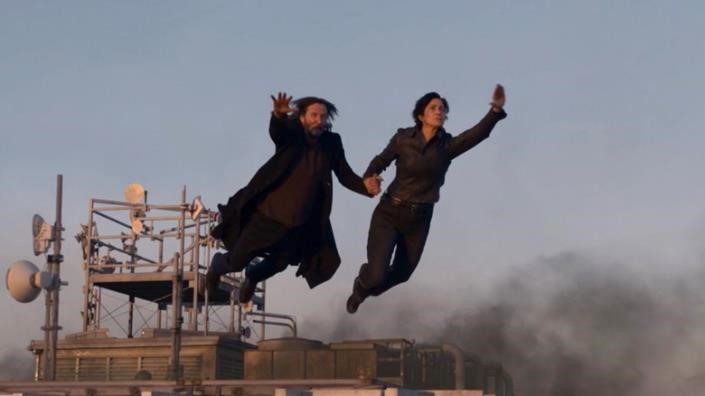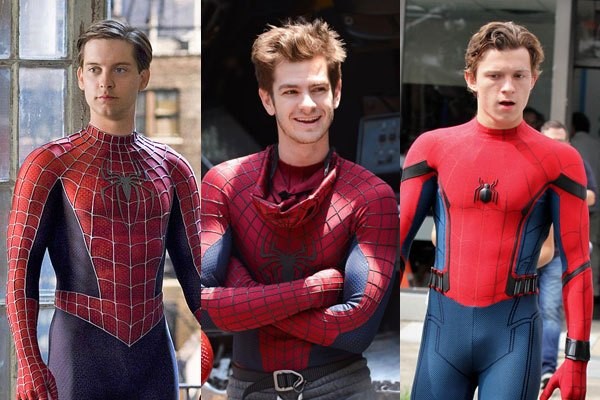Fan Service, Intertextuality, and the Gaping 4th wall A look at The Matrix Resurrection and Spiderman No Way Home
Andreas J. Pratama
At end of 2021 bridging to early 2022 saw the popularity of two high caliber blockbuster Hollywood movies. The Matrix resurrection and Spiderman: No way Home. The two iterations of respectively the Matrix IP (intellectual property) and Spiderman IP has been shot in exhaustingly many different versions, takes and perspectives. One thing of note is that the movie version dedicated for the mass consumption is seem to be separate in tone and complexities of problem laid out compared to those made specifically for the comics, the animated series or any other outlets.
Both the Matrix and Spiderman sequels act, to some degree and extent, by employing the fan service purpose. The Matrix specifically seemed to employ the same degree of Deleuzian repetition where shamelessly stating and strongly implying that repetition is imminent, the volume of references filling up the entire film is nearly that of 50%. Old footage from the first three sequels were included and being utilized merely for the purpose of justification that “this is the matrix” as if to boldly state that this is the “matrix” (as a brand) we came to know and love. While Spiderman brought nothing new to the equation while there are literally hundreds of other villains and explorable story arches from the comics sealed by geek-level accessibility, instead the film chose to bring back numerous villains from other iterations of spiderman across different studios and production houses under different publication rights. This is what came to be known as fan service, the familiarity it ensues brings a bang of well reception: the way a human mind would prefer to traverse familiar things as opposed to venturing an unfamiliar territory.

The fan service and its familiarity used to be stitched together by the mind of the audiences. Through Kristeva’s intertextuality, the awareness of interconnecting narrative was pieced together informally. This came for example in the form of how the elves of Nordic myths appeared in lord of the rings and how the lord of the rings appeared in memes. The message always gets carried across from one host of story to another. As we refocused back to the matrix and spiderman, the intertextuality no longer operates across different period of times, lores and myths but across different iterations by different brands and IP rights. The audience is well aware of how inter-meeting of the intertexts, if not extremely rare rather impossible to happen, but still happened nevertheless and caused quite a surge of reception and rekindling of popularity. As with the matrix, we see a kind of restart and a branching new possibility where the gender dominant role switched side being the spotlight, possibly due to the gender swap procedure the directors undergone. Spiderman No Way Home on the other hand played with the sense of intertextual nostalgia, the highly accessible Superhero movie genre saw high viewers rating in the last 20 years alone we saw 3 different reboots of Spiderman. If all the fans came to see these reboots, the extreme familiarity of the nostalgic intertextual fueled the feel-good effect and the hype the film garnered upon seeing old familiar faces villains or heroes they thought never appearing inside the same frame.

If in the theatrical context the fourth wall was breached by the actor by breaking out of character and realizing their existence as an actor. This time around, the 4th wall was left agape. Who left them open? The audience themselves. Audience are self-aware of being one, across different reboots and production houses – stories that should be cut off and left to conclude suddenly able to be pieced together. The possibility that happen only across different production houses and limited by rights and laws, if agreement is met these walls could come down instantly. The audience that being self-aware of the pasts, and memories of narratives refused to be dictated by such limitations, instead the possibility of it happening despite the odds is what made the moments when the three spiderman are on screen became magical, so too was seeing Neo and Trinity in a different light, in a newer matrix, a story that previously should have been concluded suddenly rebridged, reforged to keep narrative continuum alive.
So thus, the rhetorical question remains, should audience today be self-aware in the various experience they have gathered, or should awareness of the intertext remain fragmented so that each of the iterations can be experienced in isolation? I believe this is already very difficult to keep isolated, as we saw the cravings in the audience, primarily in how the avengers created pop phenomenon back when Captain America mention “avengers assembled” after the audience witnessed the resurrections of the former heroes disintegrated into ash being brought to life. From then on, I knew that it is the continuation of the lore that made something significant as it anchors deep into the memory, familiarity and emotional values of the audience can it ascend the status of sublime.


Comments :